Dehorning of calves in organic farms is common these days. However, this practice is not legal in Switzerland and the EU.
Some approve of dehorning, and others don’t. You can weigh things fairly by knowing the importance of cows’ horns.
Do cows have horns? As hoof animals and ruminants, cows have horns. These horns grow symmetrical on their heads. When a cow was born, you’ll see a small hairless patch that is highly pigmented, where horns grow. The growth of the horn appears several weeks after which the cow has started consuming grass or hay.
Cows normally grow horns, and it’s human intervention that created the polled ones through dehorning and disbudding apart from genetic modification. Some people don’t agree with it, and you can still find cows with horns.
There’s a study that mentions different circumstances in that cows attacked people with their horns. Is it a valid reason for eliminating cows’ horns? Each body part has a purpose, just like the horns of the cow, which this article will tell you.
Why Do Cows Have Horns?
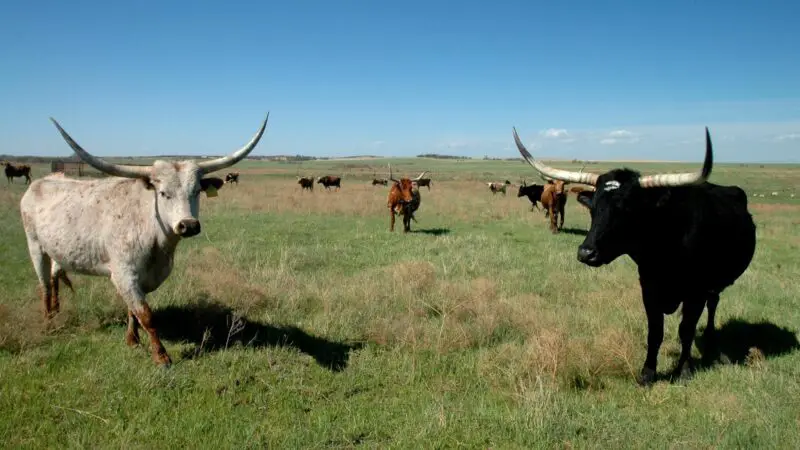
Cows are ruminants and hoof animals, so they have horns just like any other animals from the same family. The horns help these animals in terms of vision, breathing, digestion, and metabolism. They also represent a cow’s hierarchical position.
What Are Cows With Horns Called?
Cows with horns are called horned cows. These horns are bones.
Do Cows Have Horns or Antlers?
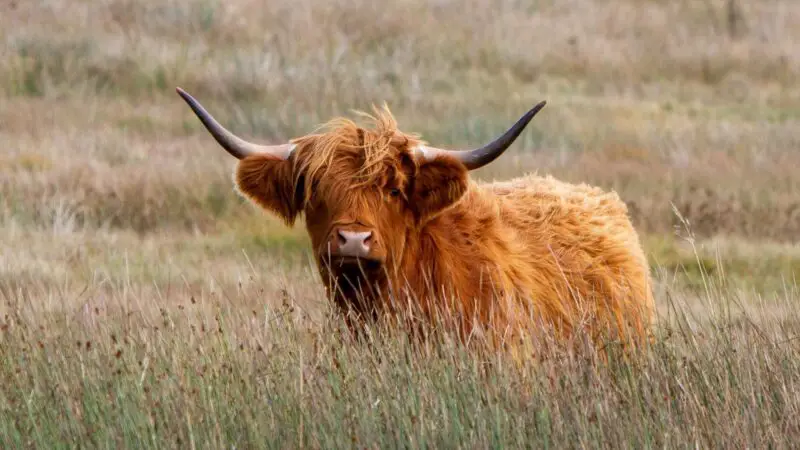
Cows have horns that are different from antlers. The horn is a skin protrusion that has a bony core. It contains blood cells, internal air spaces, and nerves. Cow’s horns grow throughout their lifetime.
On the other hand, antlers are bare, dead bones that are covered with skin. They grow and develop but wither at some point. Moreover, they go through a shedding process to allow the new ones to develop annually. The antlers grow bigger each year.
Do Cows Have Nerves on Their Bones?
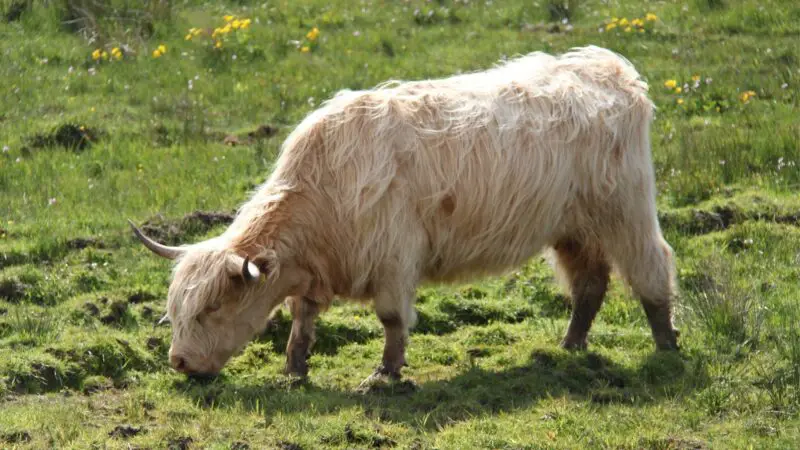
There are nerves on cows’ bones because the latter is connected to the body’s external surface.
What Is the Use of the Horn of the Cow?
Cows have horns because these parts affect some aspects of their lives.
Some Characteristics
The figure of a cow defines its horns. This animal obtains a stature based on its body’s compactness. Furthermore, horns help them to have a clear vision.
Cows have limited vision, which is only for 60 degrees viewing frames within 10 meters. When it’s beyond this perimeter, the cows can only see mere movements and outlines from their horns.
Thus, polled cows through genetic modification have a closed set of eyes compared to those that have horns. Hornless cows are inclined to focus on the forward direction with a wider scope of the blind spot.
Herd’s Hierarchy
You will understand the cow herd’s hierarchy if you spend some time watching them grazing. The distance between cows is the indication. Superior cows with horns need to be given three meters by their subordinates.
The gap among hornless cows can be as much as one meter. It leads to the conclusion that it’s easy to embed harmony within the herd if everyone has horns of the same size.
Digestion and Metabolism
Cow’s horns would usually smell sweet and spicy. If it becomes too strong, there’s something wrong with the animal’s digestion. The important metabolic procedures, which are called rumination and cellulose fermentation among ruminants like cows are connected to the horns.
Unlike other animals, cows don’t have incisors or canine teeth. They only have a horny dental plate, so the cellulose from plants that they eat is hard to break.
These procedures happen in the foremost part of the animal’s body. The horns assist the frontal weight to minimize forward force. Thus, you will see cows with their heads up while chewing. Once the food is swallowed, the horns help to send it to the stomach as they stop the pressure that can let the food escape.
Breathing
The horns are connected to the enormous paranasal sinuses. So, they take part in breathing in and out.
Do Male Cows Have Horns?
All male cows, as long as not genetically modified, have horns.
Why Do Cows Have Their Horns Removed?
Cows’ horns are removed based on their positive economic impact. Based on the data of the National Animal Health Monitoring System, marketing cows with horns went down to 6.3% from previously 8.4%.
From the reports of Eastern Oklahoma State College, the sale of 9,000 horned cows is less than $3.23 / cwt for each head compared to their polled counterparts.
In 2005, National Beef Quality Audit found a $1 decrease for every marketed finish product from cows that were not successfully dehorned. It’s due to the bruising that compels producers to trim the carcass.
Another reason that cows’ horns are removed is to protect the herdsman. Bulls can be aggressive, and there are cases where they attack people. Whoever takes care of a herd will find relief in facing hornless cows.
This precaution is beneficial for farms with limited space. The cows can’t easily injure each other even in loose housing. When fights among cows become a big problem, even the adult ones are subjected to dehorning.
Do Horns Grow Back?
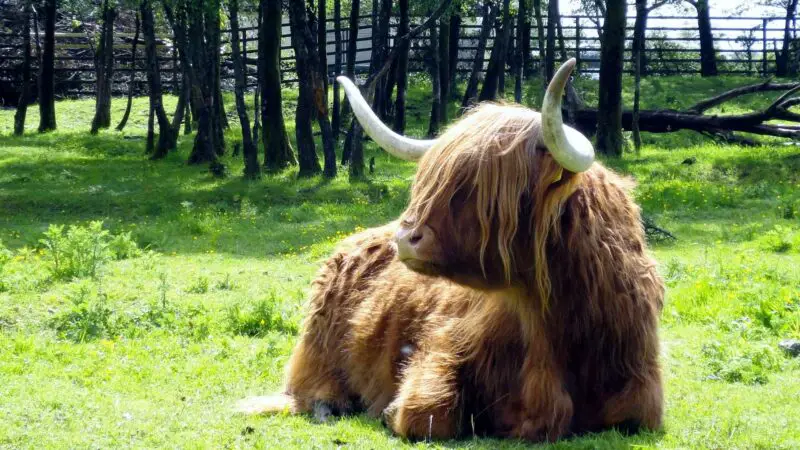
There’s a low chance of horns growing back despite the dehorning method given that the process is done correctly. The reason behind it is that the horns grow from the skin. But if the horn bud or base remains intact in the skin, the horns will surely grow.
The regrowth of cows’ horns can be in its full size or just small scurs. Some will regrow curling or going towards the cow’s head. Horns can be distorted as well. These are the consequences of unsuccessful dehorning.
Does It Hurt to Cut Cows’ Horns?
It hurts to cut cows’ horns as there will be bleeding veins. Pain control is required, so anesthesia must be administered.
When Should Cattle Be Dehorned?
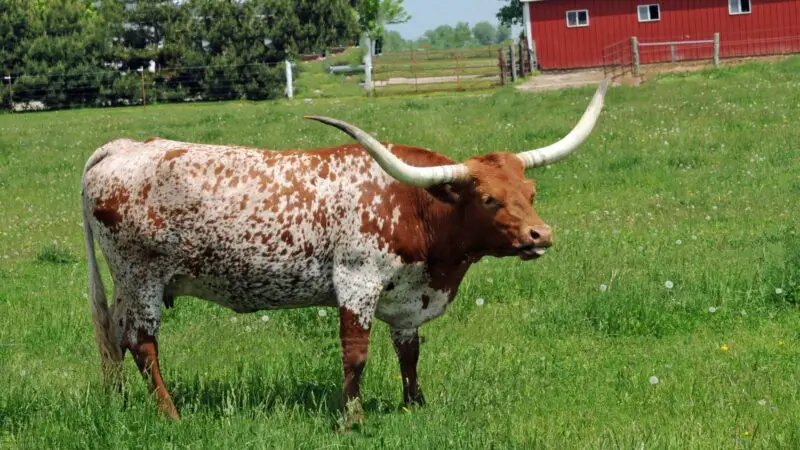
Cattle can be dehorned before six weeks old or until its eighth week. Aside from the cow’s age, you have to consider the weather when doing the process.
It’s best to do it under mild weather in winter so there will be no flies that would go after the wound.
Frequently Asked Questions
Do Cows and Bulls Have Horns?
Bulls are male cows, and they have horns which make them one of the most dangerous domesticated animals. Bulls are responsible for 48% of cattle-related fatalities based on the records of the US Department of Labor Census of Fatal Occupational Injuries.
Why Do Some Female Cows Have Horns?
Although horns are primarily linked with male species, female cows have horns too. This is explained in a study about the weaponry evolution of female bovids or cattle.
It may have happened in evolution because of competition over the food supply. While males use their horns to protect territories, females have them to fight predators like bears.
The horns of the female cows are straight with tips that go back to face the skull’s midline. This form implies that it’s more of stabbing predators. They use it to protect their offspring.
Related: Do Female Dairy Cows Have Horns? | All You Need to Know!
Are Cow Horns Hollow?
Cow horns are not hollow. It has a bony core with a diameter that is larger than the horny casing. There are airy sinus cavities inside it that allow the large blood vessels to get into the bone.
These cavities extend to the bone as the cow gets older. Layers of mucus membranes are also present. That’s why air flows in the horn, as well whenever the cow takes a breath.
Furthermore, the cow’s breath is affected by the rumen. This animal belches once or twice a minute. When dehorning a cow, the smell of the rumen infuses from the wound.
Summary
You now know that cows have horns because of the herd’s hierarchy, digestion and metabolism, and breathing. Some characteristics are also connected with them, like having compact bodies and vision.
On the other side of the story, horns are removed for safety purposes and economic value. It’s based on the farmer’s goal of whether to allow the cows to grow horns or not.
List of Sources
Hand-Held Cow Horn: Resurgence of an Old Arm or a Potential Terrorist Weapon
